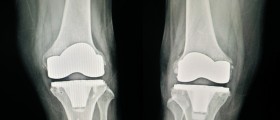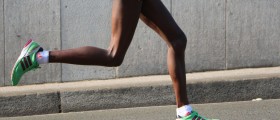
Foot fractures (e.g. a broken ankle or the very foot) are considered rather common fractures that affect people all over the world. The severity of the fracture depends on several factors. For example, there may be only cracks in the fractured bone without dislocation of its fragments (not so serious type of fracture) and more complex fractures which include movement of the bone fragments and additional damage to the nearby tissues. The most severe forms are definitely open fractures in which bone fragments actually protrude through the skin. These fractures are highly susceptible to infections.
Treatment for foot fracture depends on its severity, localization as well as several more factors. Goals of the treatment are proper healing of the fractured bone and prevention of complications. It is also essential to restore all the physiological movement of the foot.
Complications of Foot Fracture
Unfortunately, not all people will undergo easy recovery and healing of foot fracture. Some of them will suffer from complications which can significantly postpone healing and cause additional problems.
One of potential complications of foot fracture is arthritis. It general develops years after the fracture. Bone infection is a complication which develops immediately after the fracture, or during the recovery. The risk of contracting infection is higher in patients with open fractures. Damage to surrounding nerves and blood vessels is another problem which generally occurs due to dislocation of bone fragments. This is a serious problem and requires optimal medical care. And finally, some individuals who have had a foot fracture may end up with compartment syndrome, the condition characterized by pain, swelling and potential disability of the injured area. How to recognize Complications of Foot Fracture?
Patients commonly complain about immediate and throbbing pain, swelling, bruising and tenderness. Deformity of the affected area may be another sign of onset of complications. Excessive redness of the foot points to infection and requires prompt inspection. In case pain subsides after the fracture and then returns once again after several days, this may point to certain problems as well.
If any of the previously mentioned occurs, a patient is due to consult his/her doctor as soon as possible.
Treatment
Patients who have developed infections require potent antibiotics. The course may last for several days and patients should stick to doctor's recommendations and finish with all the prescribed medications. Compartment syndrome may require more complex treatment including medications, physical therapy and sometimes surgery. Damage to nerves and blood vessels are treated surgically. And arthritis (which may occur years later) is generally treated conservatively.

















Your thoughts on this
Loading...